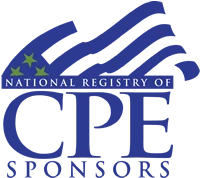Introduction
This training course links strategic planning with practical budgeting, cost control, and performance management. Across five days, participants build an end-to-end toolkit that covers cost analysis, operating and capital budgeting, variance analysis, dashboards, and rolling forecasts, so they can plan, monitor, and adapt with confidence.
This GLOMACS training course will feature:
- Structured pathway from strategy to budgeting to performance
- Linking strategy maps to KPIs and budget drivers
- Integrated budget pack template: operating, capex, and cash flows
- Practical tools for Activity-Based Costing and Budgeting
- Scenario and sensitivity analysis using driver tables and risk checks
- Performance reporting practice with variance analysis and concise commentary
- Dashboard starter kit with layout guidance and sample metrics
- Peer discussions, facilitator feedback, and quick knowledge checks
- Capstone exercise to redesign the budgeting cycle with roles, timelines, and controls
- Take-away implementation checklist and reusable templates
Objectives
By the end of the training course, participants will be able to:
- Translate strategy into plans, KPIs, targets, and budget assumptions.
- Analyse cost behaviour and apply CVP and contribution analysis.
- Design and prepare operating, capital expenditure, and cash budgets.
- Apply cost allocation methods, including Activity-Based Costing and Activity-Based Budgeting.
- Build scenarios and sensitivities and assess risk and uncertainty.
- Use variance analysis and flexible budgets to drive corrective action.
- Design concise management reports and dashboards with clear commentary.
- Set up rolling forecasts and driver-based planning.
- Align budget governance, roles, timelines, and controls.
- Lead constructive budget conversations with finance and non-finance colleagues.
Training Methodology
This 5-day training course combines theory and practice. Therefore, besides lectures based on Power Point presentations, discussions and exercises, we use company examples to illustrate how the techniques presented have been applied in real case studies.
Organisational Impact
Your organisation can expect:
- Better alignment between strategy, budgets, and KPIs.
- Clearer cost visibility and improved spending discipline.
- Faster month-end performance reviews with focused variance follow-up.
- More reliable forecasts, improving cash and capacity planning.
- Stronger budget governance, documentation, and audit trail.
- Improved collaboration between finance and operating teams.
Personal Impact
Participants will:
- Strengthen technical skills in cost analysis, budgeting, and variance techniques.
- Build confidence in presenting numbers and telling the performance story.
- Learn practical Excel approaches for scenarios, sensitivities, and forecasts.
- Gain reusable templates and a step-by-step implementation checklist.
- Develop facilitation skills to run efficient budget and review meetings.
Who should Attend?
- Those in charge of designing and managing a budgetary system
- The Staff Person who will be responsible for entering data into the budget system or training others how to enter information
- Those who want to gain control of the firm's financial standing and obtain a firm grasp on the numbers side of their job
- Financial Professionals, R&D Professionals, Sales / Marketing Professionals, General Accounting Professionals, Business Unit Professionals
- Anyone who wants to understand the basics of budgeting, costing and performance measurement





